Soundnews Review for Gustard X30 DAC
After a well-deserved vacation far away from home, it always strikes me how much better everything sounds when you give your ears some rest. It’s like upgrading your body with improved hearing abilities, ready to be unleashed. I went from DACman to BATman in 3-weeks and oh boy, it feels great to hear the music in its glory all over again!
I feel rejuvenated and ready to kick some eardrums for the rest of the year, but I don’t want to waste this potential on a review for a mid-fi piece of equipment. Don’t you agree? As you already know,I’ve spent countless hours immersed in the world of digital-to-analog converters. From humble beginnings of resistor ladder architectures of the past to the rise of affordable chip-based solutions that (kick)started a wallet-friendly revolution, to incredibly innovative concepts that blended features that I never thought possible in all-in-one devices. Each generation brought new challenges, opportunities, and as always – a relentless pursuit of audio perfection.
We at Soundnews.net live and breathe everything that has to do with HiFi. This is our biggest hobby and even if we are so close to the elusive nirvana we dreamed about when we were younger, after investing all of our time and savings into this hobby, we are considerably more excited when HiFi makers aren’t charging astronomical prices for great sonics. I’m not too fond of €6 beers that taste like €1 Piss-Weiss and I hope you’re with me on this highly educated quest.
Out of all the HiFi makers coming from Asia, I respect only the ones that release new products once or (maybe) twice per year. Nobody wants to change their gear mid-year; I never did that and I never will. Gustard never propelled us for yearly upgrades and consistently pushed the boundaries of what was possible in digital audio at affordable prices, and their X26 PRO was a monumental leap forward. It redefined expectations for what a mid-tier DAC could achieve, offering a level of performance that rivaled far more expensive competitors. Its impact on the audio community was undeniable, and it remains a benchmark for many even today. Its siblings which came two years later in the form of R26 and then A26 impressed us even more! Not only do we get a different flavor with an R2R resistor ladder architecture and then with a flagship AKM implementation, but also a wider feature set. Bluetooth and MQA? Screw them! Roon ready is the bee’s knees and R26 and A26 implemented it so well (especially with the latest firmware updates) that I couldn’t see the point of using a dedicated Roon endpoint anymore.
When news of a bigger and weightier Gustard X30 emerged, I was immediately intrigued. I started google translating webpages all over again, so I could better understand its inner workings. The promise of a true quad-DAC design working in mono mode (!) coupled with a reference OCXO clock & custom clock generator, and Gustard’s proven engineering prowess, hinted at a product that could change the high-end DAC landscape. But the final question still remained open, could it truly surpass its predecessor and ascend to a new echelon of sound quality? Is the beefier guy a worthy successor to the Iron Throne or it’s merely a flash in the pan? Let’s find that out together!
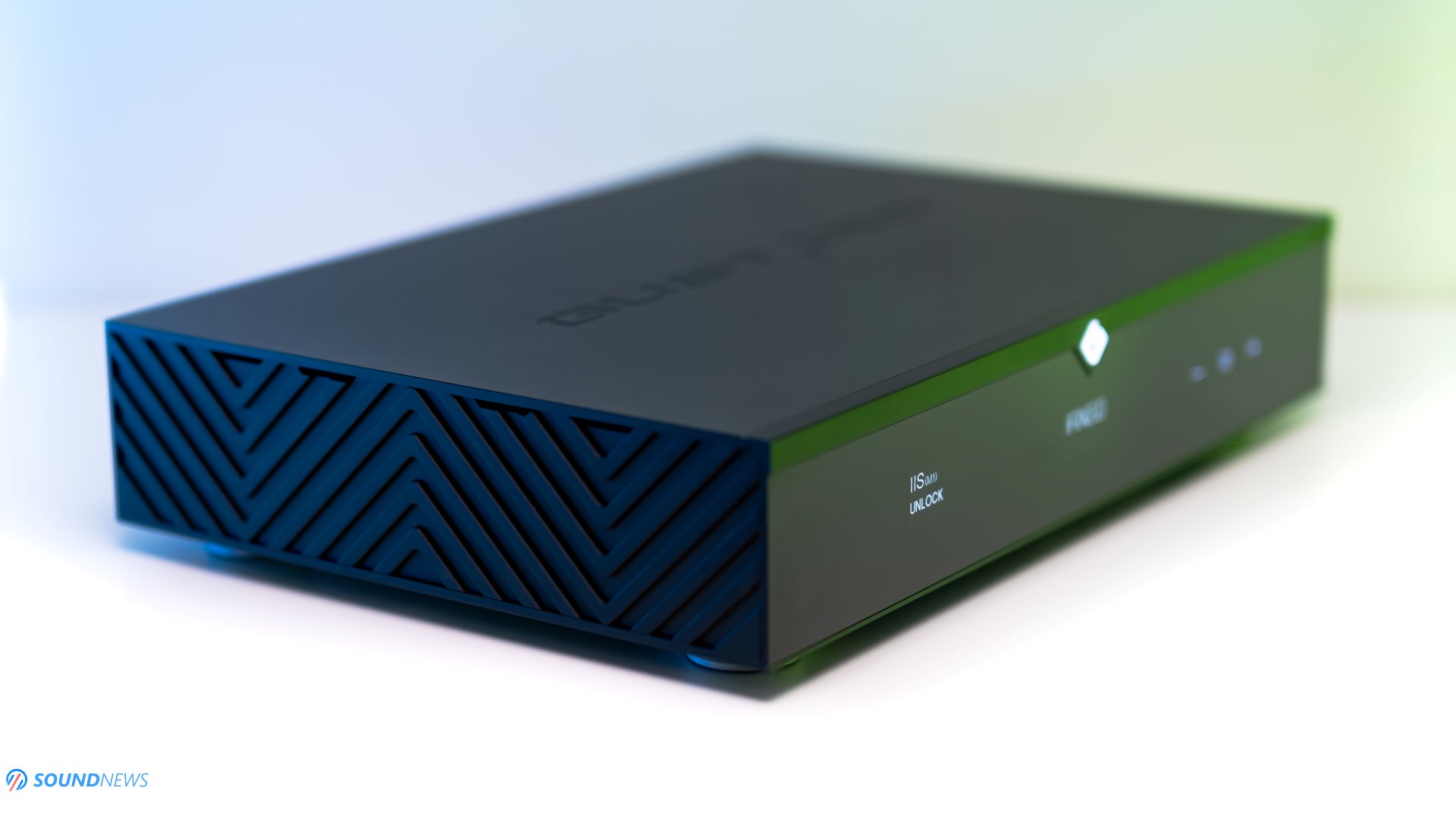
Design & Build Quality
Having a slight OCD and a fetish for math, I love it when I’m dealing with perfect symmetry in everything I do in life. Believe it or not, even the pictures posted around here and the placement of audio gear on the audio rack have a perfect symmetry. I like it when things align perfectly, if not, I will tinker with them until they will offer a pleasing visual impact. Over the years I relentlessly hammered Gustard. First with their mini-CDs, then with their awful-looking pseudo-English website. I never liked their remotes and that seems to be a recurring phenomenon. While I like their tank-proof cases, well-made metallic footers, and solid CNC machined cases, I never quite resonated with their misaligned displays and asymmetrical cases. Gustard A26 was the first unit that hit the jackpot for me. It was solid, beautiful, symmetrical, with a centered display, everything was exactly how I envisioned a proper HiFi equipment would look like. It was beautiful on the inside and out. Luckily, Gustard followed the same winning formula. We have a bigger and heavier case that’s home to a much beefier digital and analog circuitry, but when it comes to aesthetics, it looks more serious and refined at the same time.
We have a barely lit Gustard logo exactly in the middle, a tempered glass front panel with touch controls, and obviously, a massive monochrome display that was blessed with a user-friendly UI. What’s not to like?
I dig the zig-zag pattern on its sides; I also like the subtle openings that will move the hot air outside its case. Don’t ask me how, but this 4-chip monstrosity is no longer as hot as the X26 PRO was back in the day. That might be bad news for some (no more frying eggs on its surface), but for the rest of us, this is a good change of pace, as the electronics operate nicer at a cooler temperature and will have a longer life span. The metalwork seems flawless, the case is thicker compared to what Topping and SMSL provide and, in this regard, I’m sure it will keep at bay all wireless interference.
It needs to be said that all digital inputs on the back have rubber protection doors, a minor detail that might have a major impact on the user experience. Don’t forget that every exposed connector works as an antenna, so covering them was a genius move that might impact the sound performance in a good way.
Overall, we have a much beefier unit that is pretty much on par with the footprint of my Rockna Wavedream Signature. The case isn’t as deep, but the overall shape and size are very Wavedream-like. Its weight went up to 10 kilos (22 lbs.) which shouldn’t be a surprise to anyone, since 4 chips working in mono mode will need at least twice the number of components (LPF, I/V) compared to a single chip design working in balanced mode. The manufacturing price thus went up and so did the asking price, X30 is currently retailing for $3000.
The only thing I don’t like about the X30 is the same low-quality plastic remote control. I understand the reasoning for bundling it with all of their DACs and all-in-one combos, but a premium product like X30 should come with a CNC-machined aluminum remote. I would pay extra to have such a remote. It’s nitpicking on my part, but using it mainly in a high-end stereo rig, I do wish it came bundled with a nicer remote.
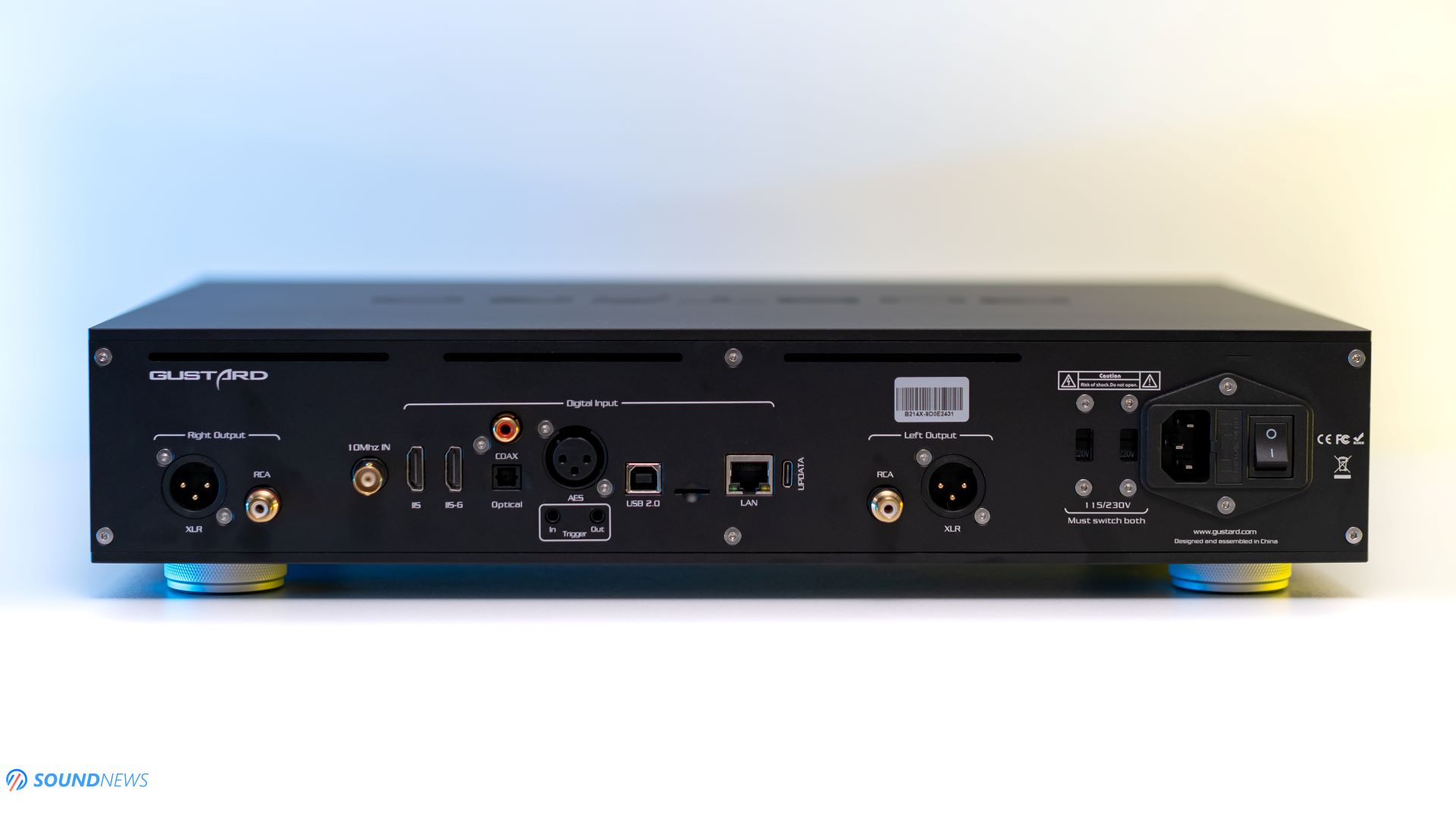
Controls & Connectivity
The whole unit has a single On/Off button, taking the shape of the Gustard logo. Once powered the OLED screen will light up and a few touch buttons will pop out of nowhere. You can see the volume controls on the right, including a setting icon in between that will engage the user menu once touched. It can’t get much simpler than this and the cherry on top is a user-friendly UI.
Taking a look at its back, you’ll be surprised by how many digital inputs are being offered. Before powering on the unit, please make sure that both switches are showing the correct AC voltage (115V or 230V), these two are connected directly to the linear transformers found inside its case. Checking out the digital inputs, X30 has them all, including two I2S inputs and an RJ45 (Ethernet) input that will unlock the internal ROON endpoint, in case you already have a ROON Server installed. The Ethernet input also supports additional protocols such as Apple’s AirPlay, UPNP, and NAA. You can spot a 10 MHz clock input, but honestly, X30 uses one of the best OCXO clocks I have seen on sub $10K DACs and I wouldn’t bother using an external one.
The usual RCA and XLR outputs are present configurable as fixed or variable, depending on the setting, meaning that you can use it as a DAC and passive preamp if you wish. There’s one thing which stands out when checking its tech specs at that’s the output impedance of both the RCA and XLR outputs, sitting at just 100 Ohms. A lower impedance like that ensures a better handshake with integrated and power amplifiers of all sorts and even if we don’t have a dedicated line-amplifier circuit (active preamp), it should work decently when paired with power amplifiers.

Menu Settings
As previously mentioned, X30 isn’t loaded with bloatware or hidden menus. It’s incredibly simple and straightforward. Its UI is accessible via the remote control or by touching the settings icon. Once engaged, you’ll have the following options:
- PCM Filter – You can choose between three digital filters. It’s important to mention that these were NOT developed by ESS Technologies (as most of you might think). Gustard engineers developed them and (finally) they make a difference. You can choose between Vivid, Gentle, or Composite. The first one sounds the most accurate and fast, Gentle slows down the transients a little, while removing some treble energy and the last one feels like a combination of the two. Given the rest of my chain and knowing my inner self, I left it at Vivid.
- DSD Filter – Four options are provided. You can choose between a narrower bandwidth for a smoother top-end, or a wider bandwidth (50 kHz, 60 kHz, or 70 kHz) for an extended treble delivery. Choose the one that suits you best.
- NOS Mode – It’s either enabled or disabled. Gustard isn’t providing any information about this feature, but thanks to a programmable FPGA chip, Gustard was able to disable the oversampling filter which is enabled by default on all ESS Sabre devices. NOS mode will offer a smoother sound, bonding the notes in a more natural way, and once disabled, it will behave like a regular oversampling DAC.
- REF Clock – Two positions are provided: Internal (Default) or External 10 MHz. You can choose the internal clocking system (which is already a very impressive and highly accurate atomic clock) or you can go with an external 10 MHz clock generator. Leave it at Internal.
- IIS Mode – Four modes are provided. Considering that the I2S (IIS) input wasn’t standardized yet, these modes will ensure wider compatibility with your streamers and digital transports. By default (Mode1), X30 uses the standard I2S pin configuration used by PS Audio, Rockna, and others.
- Phase – Two positions are provided: Non-Inverted (default) or Inverted. Self-explanatory, leave it at default.
- Trigger Channel – This option lets you choose the trigger channel that will automatically power the unit. Any digital input can be chosen, including the LAN input.
- Trigger Volume – This option lets you choose the volume at which the unit will power when triggered. If you’re using it directly with power amplifiers (which is not an ideal thing to do), then I recommend using the -40 dB volume setting.
- Display – It’s either Auto or Auto-Off. Since we are dealing with an OLED panel that could potentially burn in after a year or two, I would use it in Auto mode which will turn off the screen after a few seconds.
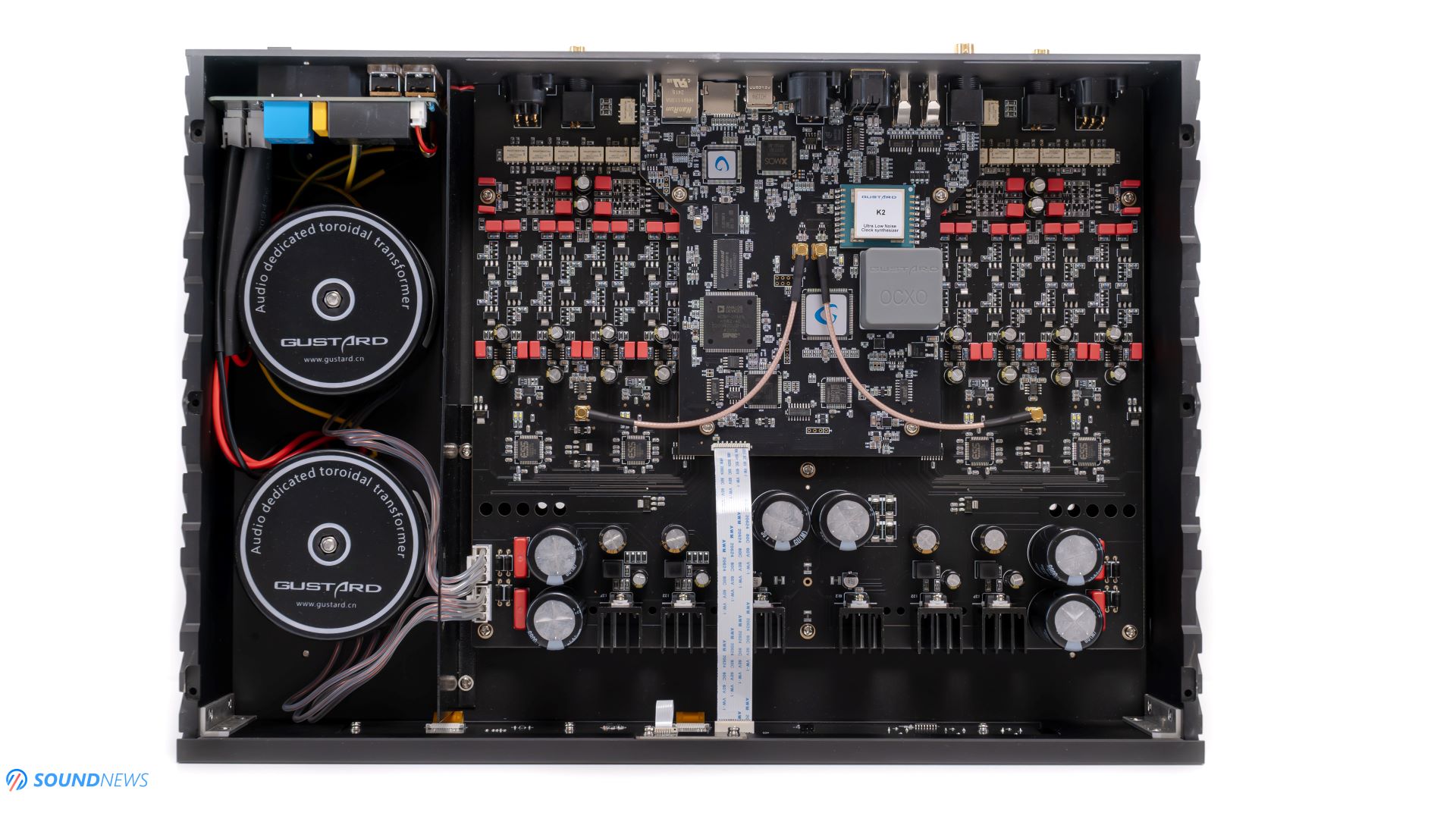
Under X30’s Hood
Although X30 has a few similarities with the X26, R26, and A26, except for the power supply section which was marginally improved, everything else was built from the ground up in quite an overkill way. An audio engineer once told me that overkill doesn’t exist in audio. If you don’t care only for the measurements, then you’ll use higher-quality components and if you don’t care much for the musical involvement, then you’ll use lower-grade components. However, as you already know, an audio analyzer can’t analyze the music as the human brain will do. Square and Sine waves in a controlled environment are one thing, but complex music renditions are something else entirely.
The first and the most important part of the X30 is that we don’t have a single or two flagship-grade ESS Sabre 9039 PRO chips, but FOUR of them. For the record, in all my reviewing career, I never experienced four flagship ESS Sabre silicon used in mono mode, like what we have in the X30. Now, ES9039 PRO is a very special DAC chip, it can be used in 8-channel mode (paralleling two channels for a slightly higher SNR), it can be used in 4-channel mode (balanced mode), two-channel mode (single-ended mode), however, this particular silicon offers a much higher SNR (signal-to-noise-ratio) and dynamic range when used in mono mode (1 channel). How much better? 140 dB DR in mono mode versus 134 dB in balanced mode. So why then, most DAC makers are not using it in mono mode? Economics, part costs, and development time. You will need 4 pricey chips for that to happen and at least two times the components used at the I/V, LPF / Output stage. If you want to squeeze the very best ES9039 PRO can offer, then this is the way (in strong Mandalorian).

But wait! See that bombastic grey thingy on its logic board (the fattest guy on the board), well that my friend is the internal clocking system. And it’s not your typical Crystek 950 series, Accusilicon 318, or higher performance 338 Series. We are now dealing with a proper oven-controlled crystal oscillator that can usually be found in much-costlier D/A converters, as they usually cost a pretty penny. The clock is controlled by a custom-made K2 synthesizer which Gustard already implemented in the 26 series. Remember the NOS mode and the custom digital filters I mentioned a while ago? All of that was possible thanks to an FPGA programmable chip that bypassed the default oversampling algorithm and digital filters found on the ES9039 PRO.
As you already know, the current-to-voltage conversion stage (I/V) is equally important as everything else and you can see lots of discrete components used in there. Starting with X26 PRO, Gustard started using lots of discrete components in the analog output stage biased into a higher current operation and that’s why it was frying eggs after an hour of use. One of the most important parts of a DAC is the analog output stage, if it looks like 2 op-amps were thrown in there at random, then expect a flat and boring sound and if you see an amplifier-like output stage, then expect a punchier sound that can unlock your imagination. Once again, Gustard didn’t spare a dime and went with a ton of discrete devices such as diodes, resistors, and even transistors.
Although for the power amp aficionados out there, I do recommend using a dedicated preamplifier (for the record, the most expensive component in my setup is the preamplifier), Gustard implemented a relay-based (R2R) volume control which will maintain a perfect channel balance at every volume position. It’s important to mention that at maximum volume or fixed volume position (selected from the menu), the volume control is bypassed internally.
In the usual fashion, we have two 50W linear transformers, one used for the digital section and one used for the analog section, which is again a great design decision. The transformers are quite heavy and you can feel the unit pulling you down on the left side when holding. What’s unusual for a unit of this price is having massive voltage regulators bolted to aluminum heatsinks. This ensured a lower working temperature compared to the X26 PRO and possibly a longer life span.
All in all, I must say that X30 looks outstanding on the inside. It impressed me with several design choices that I hadn’t seen by now, at any price. Flagship ESS Sabre silicon working in mono mode is a first for me, plus the overkill clocking system and beefy output stage should leave a massive impact on the final sound as well.
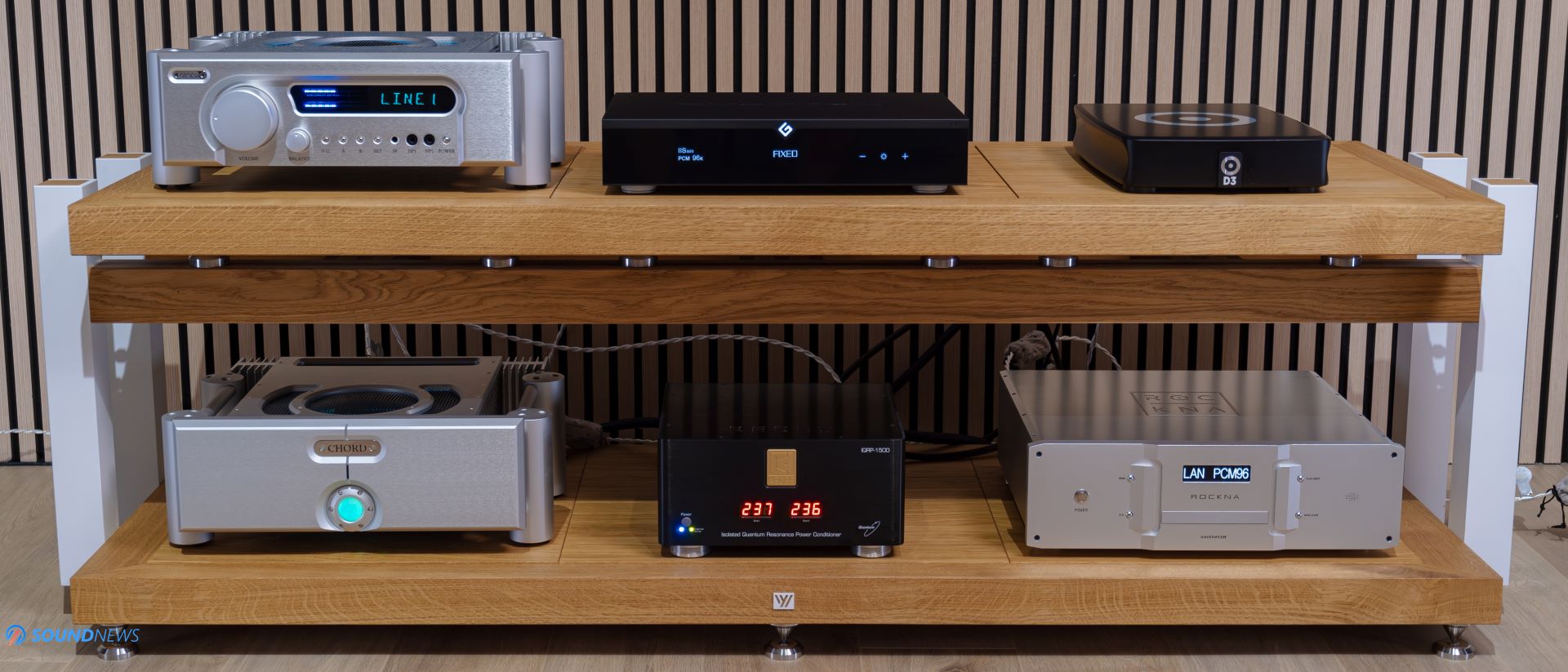
Test Equipment
Before you ask, X30 was used in a stereo rig most of the time working as a standalone DAC, but I also used it as a Roon endpoint and DAC in a well-thought headphone system with a bunch of dynamic and planar headphones.
In my office it powered the majestic Trafomatic Primavera ($15.000) or the Enleum AMP-23R ($6250) headphone amplifiers, driving either the T+A Solitaire P ($6.900) which I fell in love with at the Munich High-End Show 2024 and later purchased, or the HiFiMan Susvara ($6.000) to strengthen my initial impressions.
In the living room, the X30 was fed via I2S from the Rockna Wavedream NET 4 Tb Roon server ($11.000), followed by a Chord Electronics Ultima 2 Preamp ($19.500), Ultima 5 Power amplifier ($15.900). Raidho TD 2.2 ($49.500) were my loudspeakers of choice, playing tunes for almost two weeks before dropping my final evaluation. All cabling used was of Crystal Cable Monet breed (power, interconnect, Ethernet and speaker cables). Everything was also powered by a KECES IQPR-1500 balanced power conditioner which does miracles in a flat.
Everything should be as clear as the blue sky, so what are we waiting for? Let’s hit some eardrums!
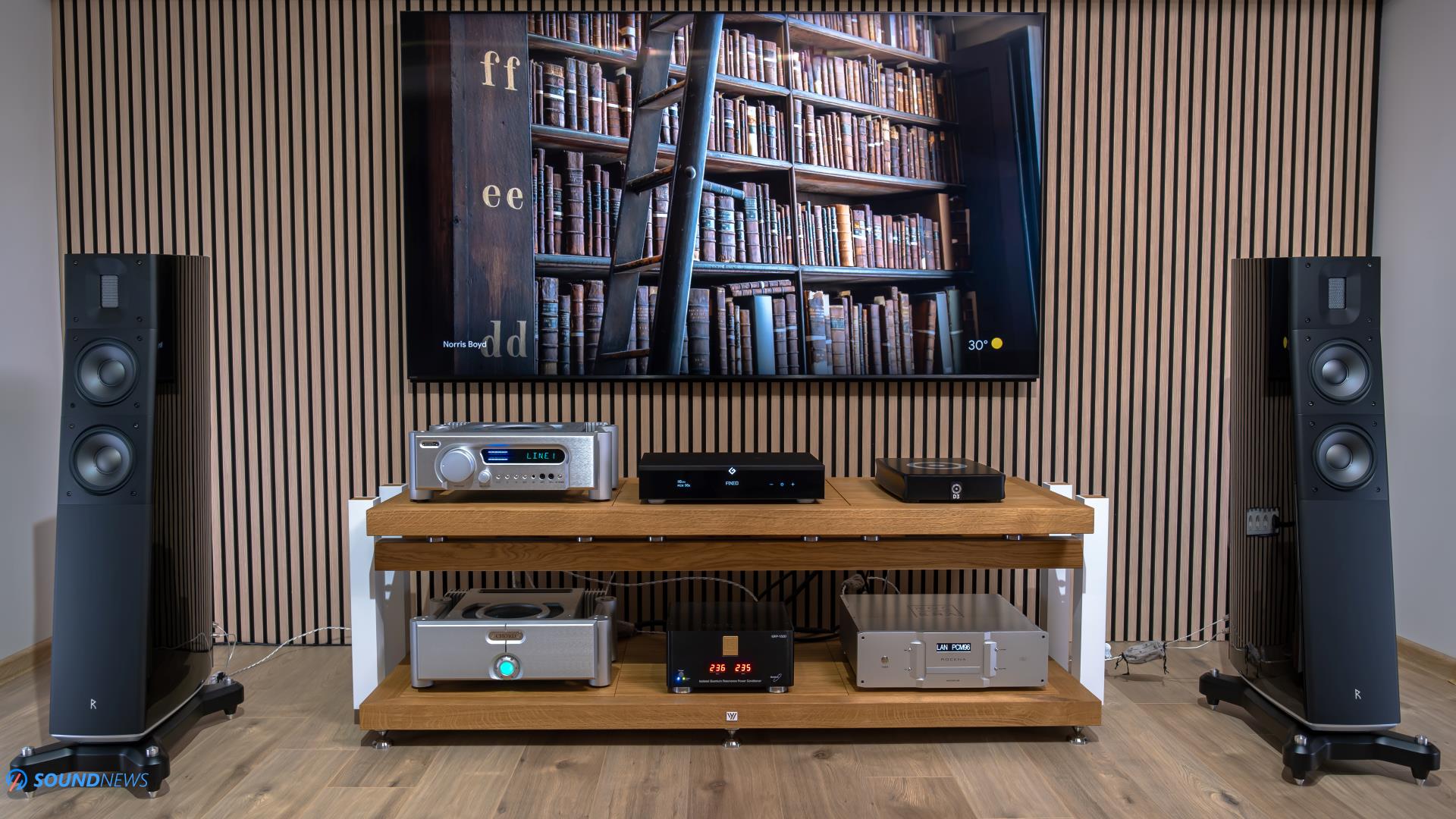
Sound Performance
I. Preliminary Sound Impressions
I must confess that even a guy like me will have preconceptions even before listening to a particular unit, especially after opening up the case and checking the internal components and the signal path. I have these preconceptions all the time and most of them are staying true. An R2R ladder DAC will always sound like one, trading an instantaneous start and stop of the drivers with a somewhat fuller sound. A delta-sigma oversampling DAC on the other hand will enhance resolution, pace, rhythm, and timing while lacking grunt and presence in the naturalness department. Obviously, none of this is set in stone, and with clever tinkering, you can make incredibly fast and resolving R2R DACs (albeit at serious wallet damage) and the same goes with delta-sigma designs.
However, due to messy economics and troubled times, most of you are interested in affordable chip-based solutions that are ideally sound right or measure great. The Gustard X30 isn’t an affordable DAC per se if you take into consideration the rest of their offerings, but it can be considered affordable when compared to the titans of this industry. It so happens that I own two of the greatest DACs ever made and I won’t trade them for anything. However, sometimes a reality check is needed, the Chord DAVE already has 8 years on the market and the Rockna Wavedream Signature just hit its 10th anniversary. While these two are still rocking hard today, the technology advanced at an alarming rate in all these years and considering that Moore’s Law no longer applies to modern technology, we should expect outstanding-sounding DACs today at a much lower price point compared to what we had a decade ago.
The DAVE and the Wavedream Signature have sentimental value for me (but that’s a story for another time), so I will keep using them for a while, but it doesn’t mean that I’m ignorant of the technological advancements the DAC market is exposed to.
I’ll say it right from the start that the X30 is exactly as resolving as the Chord DAVE and exactly as fast and impactful sounding. It’s a bold statement, but my stereo rig was crafted in such a way that nothing would hide from its gaze. If you think about it, the job of a DAC is to decode zeroes and ones as close as possible to the original signal without adding and subtracting anything. If that’s your main goal, then X30 will offer that in spades and if you like hearing additional nuances, then prepare some popcorn, as X30 will unearth everything there is to hear.
In the back of my mind, however, I thought that the X30 would still have a minuscule grain and edginess that no matter what I did was (still) present on the X26 PRO. While Gustard A26 was smoother and quite organic sounding by comparison, it also had a little bit of grain to it, like the music wasn’t shown in all its glory. R26 removed the grain and paved a much smoother road ahead, at the cost of a slightly lower resolution and slower transient response. While fast for an R2R breed, it couldn’t outrun the X26 PRO when it came to dynamics and need for speed.
My preconceptions were wrongly built around the X30, as an ESS Sabre-powered DAC will show its true nature at some point. Most of the time the midrange should not have the texture that vinyl heads are seeking and sometimes the trebles might be too hard for a super-resolving loudspeaker like TD 2.2. For two weeks now, I’ve waited for the moment to loudly exclaim: AHA! I found your Achilles Heel! But, X30 refuses to be bright in the treble, or dry sounding in the midrange.
It’s incredibly technical sounding, but also organic and natural! A Win-Win situation that I didn’t see coming. I redid my tests with some of the most neutral-sounding headphone amps and cans, just to hear a beautiful melody, a soothing midrange, and all the nuances I could ever dream of. But wait, there’s more!
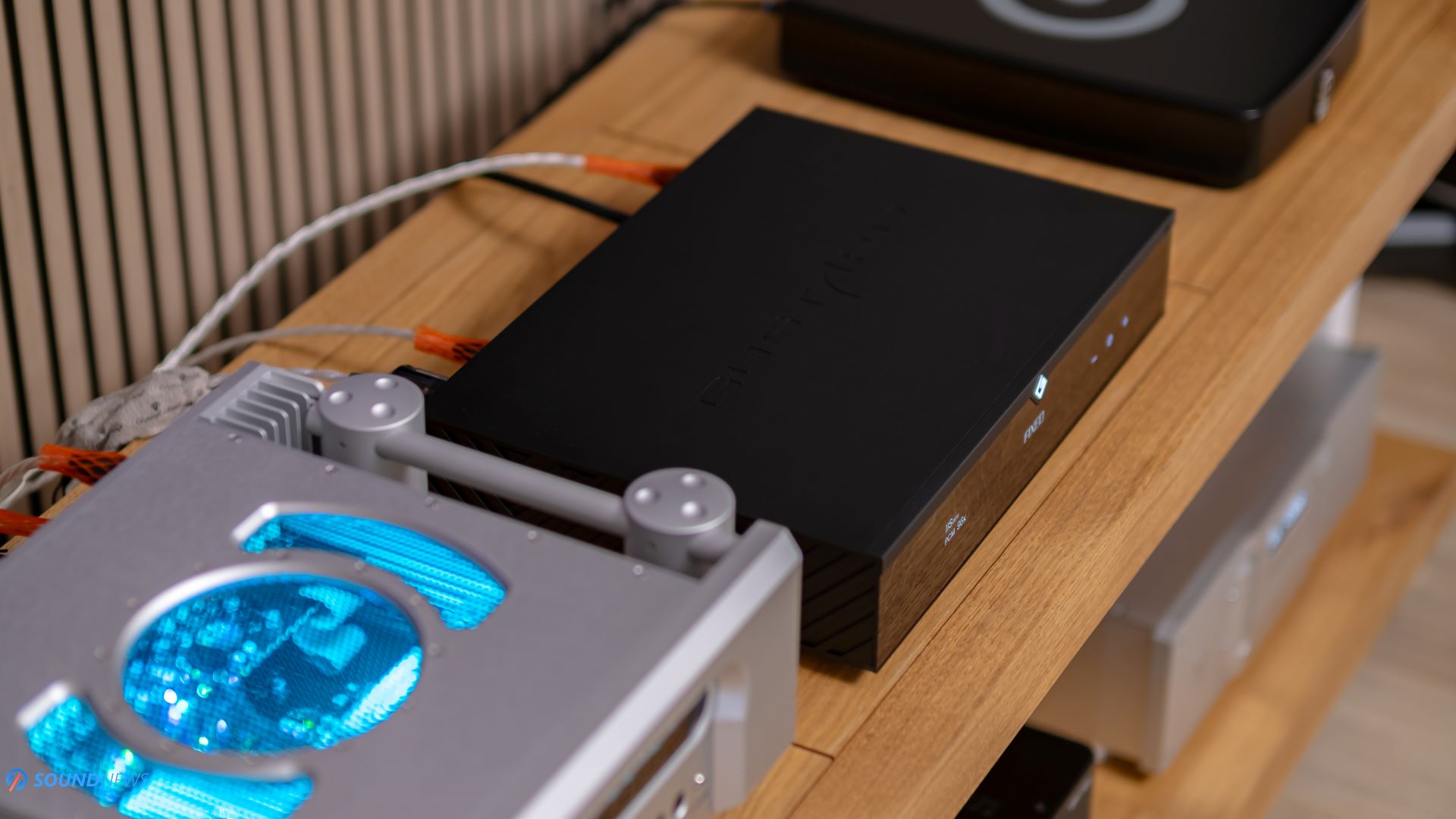
II. Soundstage & Imaging
I don’t want to sound like a broken record, but when people ask for holography in a stereo rig or out-of-head experiences in a headphone battle station, I will be unquestionably recommending R2R ladder DACs at different price points depending on the allocated budget. I can’t explain to you why they are doing things differently; I can understand the timing difference that will have a major impact on the naturalness and smoothness of the music, but why R2R creations create 3D pictures that have an incredible depth to them is still science fiction to me. We still don’t have apparatuses that can measure soundstage, depth, or imaging, yet our tiny brains can do it so easily, it’s not even a challenge anymore.
However, there is one thing that can be measured and that will have a major impact on the separation of the music, and that my friends is called: channel crosstalk or the volume level at which both channels will start interfering with one another. For the lowest possible channel crosstalk in a fully-balanced design, we need four separate signal paths and that’s exactly what Gustard adopted with their X30, using four independent chips in mono mode and then following all of that with independent I/V and LPF stages.
In layman’s terms, X30 can do proper justice to live music, big orchestras, and classical masterpieces. And I’m not exaggerating a single bit. The biggest surprise came when the naked Chord DAVE (without the M Scaler) was connected to the same Rockna Wavedream NET via USB and in no time the size of the room felt smaller. The sounds were no longer free and unhindered as they were on the X30. The DAVE didn’t quite live up to its name (Digital to Analog Veritas in Extremis) projecting a shier, flatter, and smaller image in front of me. The X30 on the other hand, sounded exactly how a properly engineered DAC should perform.
I’m not sure you observed by now, but we have a new writer on board who’s the most passionate music lover I’ve met so far. Seriously, he’s a walking encyclopedia for all things music. He’s a music-first audiophile, covering all the latest album releases and thanks to Silviu, I discovered a few tunes myself. Way to go, buddy!
I was listening to Live in Japan by Deep Purple two days ago with my old man. It’s almost a religion around here, we have been doing it for more than 20 years and it always cracks me. Now, imagine the shock when I told the grumpy old man that Deep Purple just released a new album called =1. “You’re effing with me, right? Right? Let’s rock!”
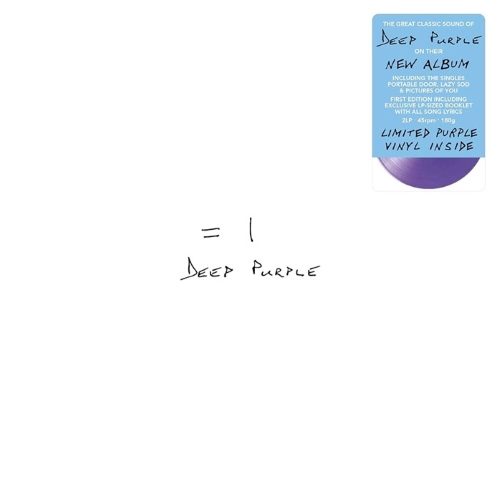
Show Me (Qobuz / Tidal) started slowly building momentum and around the 2-minute and 30-second mark, we looked at each other in awe and the track exploded with energy like it was over 9000. “They still GOT IT!” In a flash, I forgot that I needed to make some notes and a bottle of wine later, the old man started telling life stories of how it was to be a rocker behind the Iron Curtain when such music and ripped jeans were banned. “It was dangerous being a headbanger back then”, he giggled. Anyhow, the album sounds exactly like what you would expect from Deep Purple. The amount of energy oozing from these living legends left us wanting for more. What struck me is that never for a second I thought that X30 was wronging anything, on the contrary! Dynamics were going wild and even if I’m more into angrier metal nowadays, I still grooved along and felt empowered for the rest of the day. I also survived two days of excruciating dad jokes.
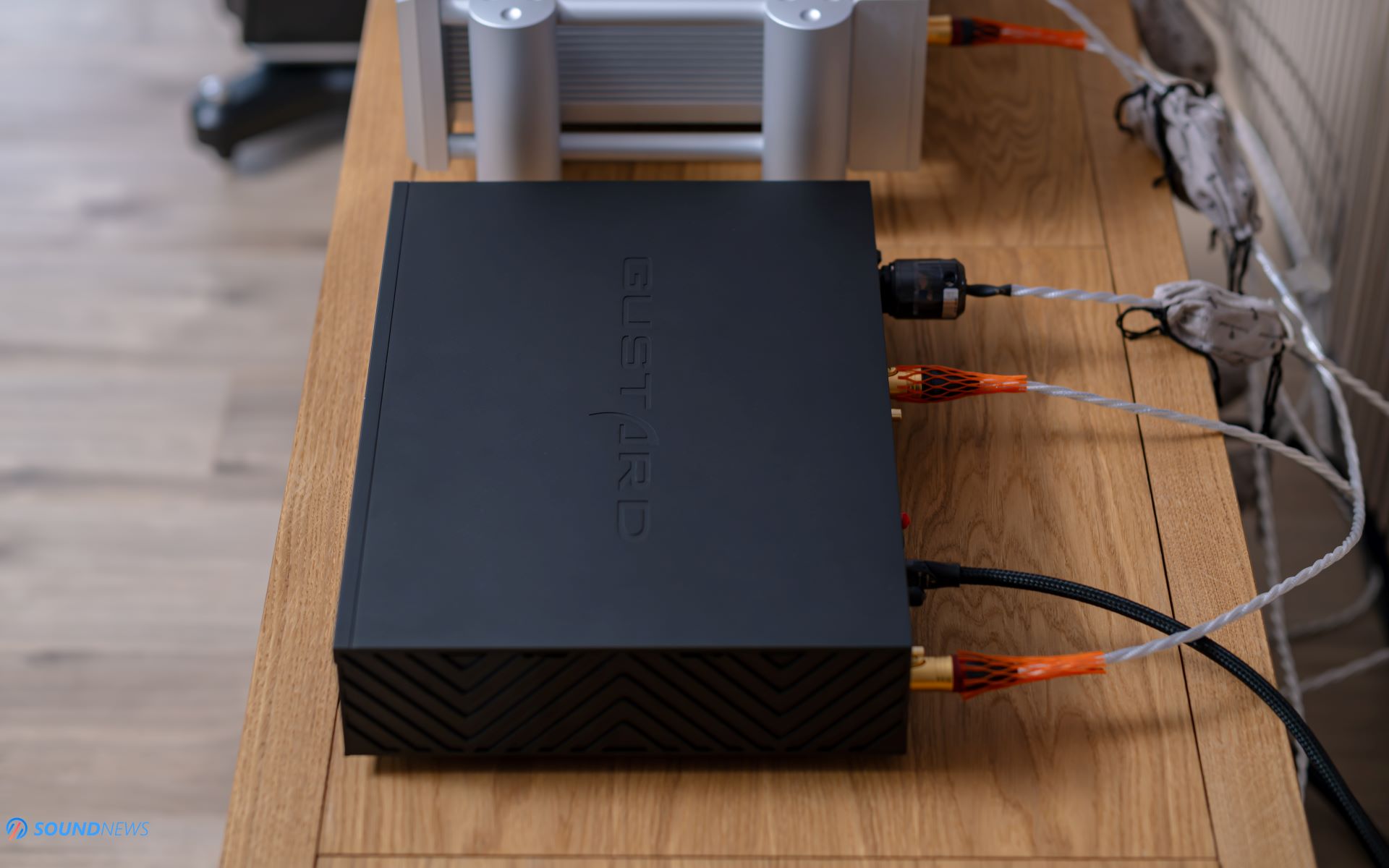
III. Dynamics & Transient Response
Can I move on without leaving a page for my favorite chapter? Of course, I can’t. Look, I don’t want to hype things to the stratosphere, that’s not the job of a trusted reviewer. I can tell you all day about mediocre-sounding converters in this regard. Dynamics are also one of those things that you cannot measure with any apparatuses, except for your brain.
Dynamics are something that’s extremely important for some, or merely interesting to others. I met a few music lovers who were in love with the organic nature of vacuum tubes, the weight they bring, the meat on the bone, the note-bonding skills, and the relaxing sight of their glow. For some dynamics are just small parts from the big four (resolution, stage, dynamics, timbre), but for me, dynamics are the bread and butter. Sometimes I look around and wonder why people don’t feel the music with their whole bodies and while I cannot answer that question, I NEED to feel the music, not only hear it with my ears. Otherwise, I’ll walk away. Music is an art form; it needs to talk with your inner self in nonverbal communication. It’s not about how crystal clear, incredibly wide, or deep it is. It’s about what it awakes deep inside you.
For me, dynamics are the trigger points for my inner self. Most converters don’t do it for me and I need to fill the dopamine void with punchier-sounding amplifiers, speakers, and headphones. The fun part is that I no longer need to make last-minute changes with the X30 so that I can bond with the music. I find it incredibly alive, more so than what Gustard did in the past.
You know, every D/A converter can transform zeroes and ones into sound waves, but not all of them are leaving the emotions untouched. Most of them are removing the magic, the part that puts goosebumps all over your body. Sadly, below a certain price point, it’s only about technicalities and not about what makes you return to your addiction.
Gustard learned their lesson. The hard way. Going from X18 to X26 PRO felt like hearing bass guitars for the first time, like sitting near the drums while the drummer a nervous breakdown unleashing his fury on the drum kit. It put the energy back into the music. All the Toppings and the SMSLs, still can’t do it at the level that X26, A26, and R26 did for me. Now imagine that these crazy folks wanted to kick everything up a notch. Up to eleven no less. Dynamics are now kicking harder; the strings have more life attached to them and the vocal cords carry the soul of the soloist with every whisper. There’s more life everywhere and it’s so easy to latch on to a better sound. Some X26 PRO users wanted some of that organic matter that R26 planted with its R2R ladder DAC section. While X30 is still close to X26’s tonality, there’s considerably more grunt in the bass and midrange, while further fine-polishing the upper treble for a more natural rendition.

I usually start my day with some sort of dopamine rush. Today, I started it with something truly extraordinary! I’m a huge fan of Marcin Patrzalek which somehow reinvented the acoustic guitar for me. Now, a few years later I also found out about Polyphia and fell in love with their unusual guitar riffs, mainly thanks to the genius of Tim Henson. Now, imagine the surprise I had when I found out that two of the best guitarists out there created a track together. It’s called Classical Dragon and you should give it a try (Qobuz / Tidal). These guys are creating pure magic with just two acoustic guitars. I wasn’t surprised at all that X30 was capable of rendering all the beauty and intricacy of acoustic instruments. Please remember that I’m not experiencing a mere “ESS Sabre DAC” but a reimagination of the oversampling DAC architecture. So, can it kick some serious @ss and sound lively, organic, and ballsy, all at the same time? Sure, it can! Dynamics and transients? Easily a 10 out of 10!
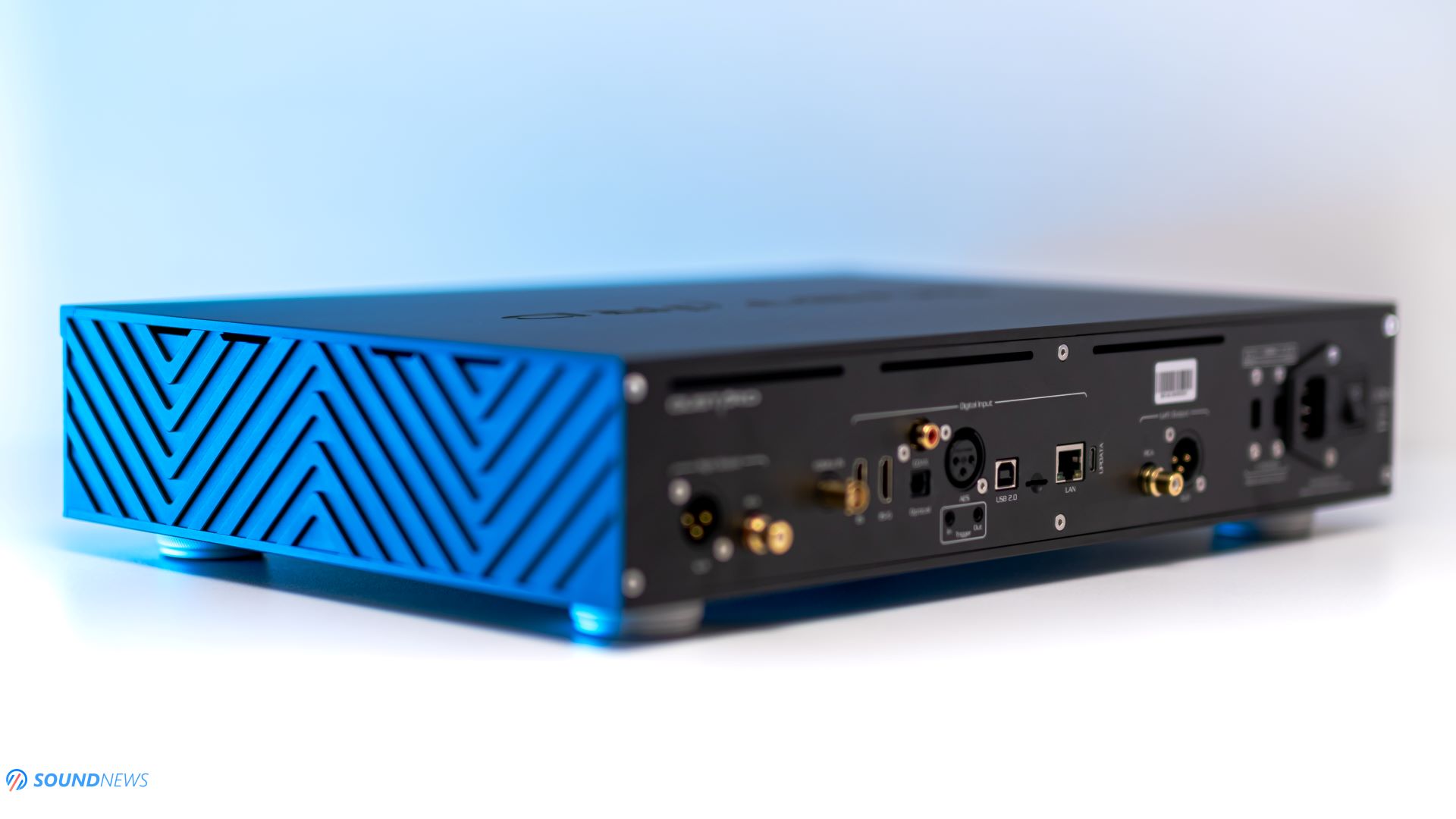
IV. Detail Retrieval
Aah, the good old resolution and transparency. The most important aspect of a DAC? Hell yeah! Without a single doubt. I don’t want to mess with your head too much. There are already tons of converters that are doing a fine job here. Even from Gustard’s portfolio, the X18 is still regarded as a fine DAC if all you need is the final frontier resolution-wise, experiencing all the things that weren’t supposed to be there in the first place. There are many other examples from all over the world and thanks to the pursuit of perfect measurements that several manufacturers are pushing so hard, outstanding resolution is no longer a must, but a norm from the get-go, even on sub $500 units.
However, can all of those converters unearth the smallest intricacies, while sounding close to the real thing? Making me stand and applaud, laugh, or cry? That’s the hard part. That’s why only a handful of units won’t bring forward the nasty digitus. It’s one thing getting a highly resolving, but ultimately dry and uninvolving sound and it’s something else getting the same resolution vividly and organically. You aren’t buying an expensive DAC for its resolving abilities alone, although that is still a very important aspect, you are buying such units for their naturalness, lucidity, organic textures, and smoothness, and that’s what I’m getting with the X30.
Once I tried the Wavedream Signature and a plethora of R2R units, I realized that except for much-needed technicalities, music started blooming, showing off its beautiful face. The so-called timbre started making sense to me, everything felt more saturated and juiced up. While we’re still dealing with a delta-sigma oversampling DAC, Gustard bypassed the default digital filters of ESS Technologies and custom-tailored their own. Swap it to Gentle PCM filter and engage the NOS mode and I can almost swear that a veritable R2R ladder DAC is doing the heavy lifting. It’s a rare phenomenon calling an ESS-Sabre-based DAC liquid, organic or smooth sounding (when needed), but X30 is exactly that kind of breed. It browses through aggressive music with such ease, I feel that system matching is no longer a concern.
In two weeks it paired with a couple of power amplifiers, several headphone amplifiers, a few headphones, and two pairs of speakers, and yet, I never felt that I needed to lower the volume – a thing I usually do when things are not aligning perfectly. The time has come to forget the wrong preconceptions, X30 doesn’t follow the same formula, it’s different and this is what makes it special. At the end of the day, it was never only about resolution. X30 is also about being punchy, organic, and weighty sounding, without skewing the frequency response. In my view, the X30 is a detail-oriented machine and it’s a very transparent-sounding one as well. The only thing it doesn’t overdo is rendering razor-sharp leading edges, which aren’t as outlined as X26 PRO usually does, but if you like some of that, then I suggest going with Vivid filter and disengaging NOS mode, which enhances some of that sharpness and leading edge.

Just Two Of Us by Marcin & Ichika Nito (Qobuz / Tidal) is again sending a clear message, music is not a linear act, nothing’s predictable and that’s the beautiful part. You never know what’s next with instrumentalists like Marcin or Ichika. It’s a short track, the moment your mood goes up, the track slowly starts to fade away. Don’t get sad, this is only an introduction to these two incredibly talented human beings. Don’t stop here. Go and check out both of these artists, I’m personally a die-hard Marcin Patrzalek fan, who always tries to reinvent the acoustic guitar. Who said modern music sucks? Once I put the T+A Solitaire P on my head, I know the midrange won’t get as cavernous as it does on the Susvara, and yet, here I am, with them on my head, with the Primavera pushing up dynamics like crazy. The only thing remained to do was to recline my chair, add a full album, and feel the beat.

V. Gustard X30 in a Stereo Rig
Gustard informs us that a passive analog preamp is powering the X30. By passive – they meant that we are dealing with accurate relay-based volume control that will keep the channel balance intact at any volume level, be it the lowest or the highest. What’s even cooler is that at maximum volume or at the Fixed volume setting (accessed from the menu), the volume control is completely bypassed, getting the cleanest possible signal from your precious DAC. That’s Odin’s blessing right there for those with integrated or headphone amplifiers. You can’t do better than this. Want my advice? Max out the volume and never touch it again after the word FIXED is displayed on its screen.
Roses are red and violets are blue, but what about the folks that are headbanging with power amplifiers? You have two options, go with a dedicated preamplifier + power amplifier combo, or for a short while you can control the volume with the X30, but be careful once it boots up. You don’t want to fry your woofers.
I won’t beat it around the bush. X30 won’t replace a dedicated active preamplifier, but it will replace a passive preamplifier – just in case you’re rocking active monitors in a near-field setup. For fun, I removed the Chord Electronics Ultima 2 PRE and let the X30 work as a Roon Endpoint, DAC, and Preamp. The final verdict? The sound wasn’t bad per se, the resolution and transparency were still there attracting lots of attention, but the control of drivers was nowhere to be found. The sound lost its grip, the transient response felt badly affected as well. Some of the naturalness I experienced a few minutes ago vanished like shadows and dust. The worst part? Dynamics were no longer kicking me in the nuts, getting a bland, unfocused and two-dimensional sound. Putting the Ultima 2 PRE back where it belongs and things are getting better, by a whole lot! So much so that for the rest of my evaluation X30 worked as a DAC-only unit or as a DAC + Roon endpoint on a few occasions.
If you already have a dedicated preamplifier or you’re using integrated amplifiers, then cheer up, as X30 behaves like a grown-up DAC in every way. The most important aspects were the soundstage and stereo imaging which were better on all accounts compared to a Chord DAVE (without the M Scaler), while the Wavedream Signature still outperformed both units on all levels, but especially when it comes to holography. Still, I was amazed by how open and wide the X30 could sound on its own. I experienced a few natural and organic-sounding ESS-Sabre DACs before (Ferrum WANDLA comes to mind) but not all of them had this outstanding stereo separation that X30 does so easily. I presume an independent quad-mono (4-channel) design from input to output completely banished channel crosstalk and improved stereo separation. So yeah, you can have a massive picture in front of you that’s breathing and portrays layers of depth even with ESS-Sabre designs.
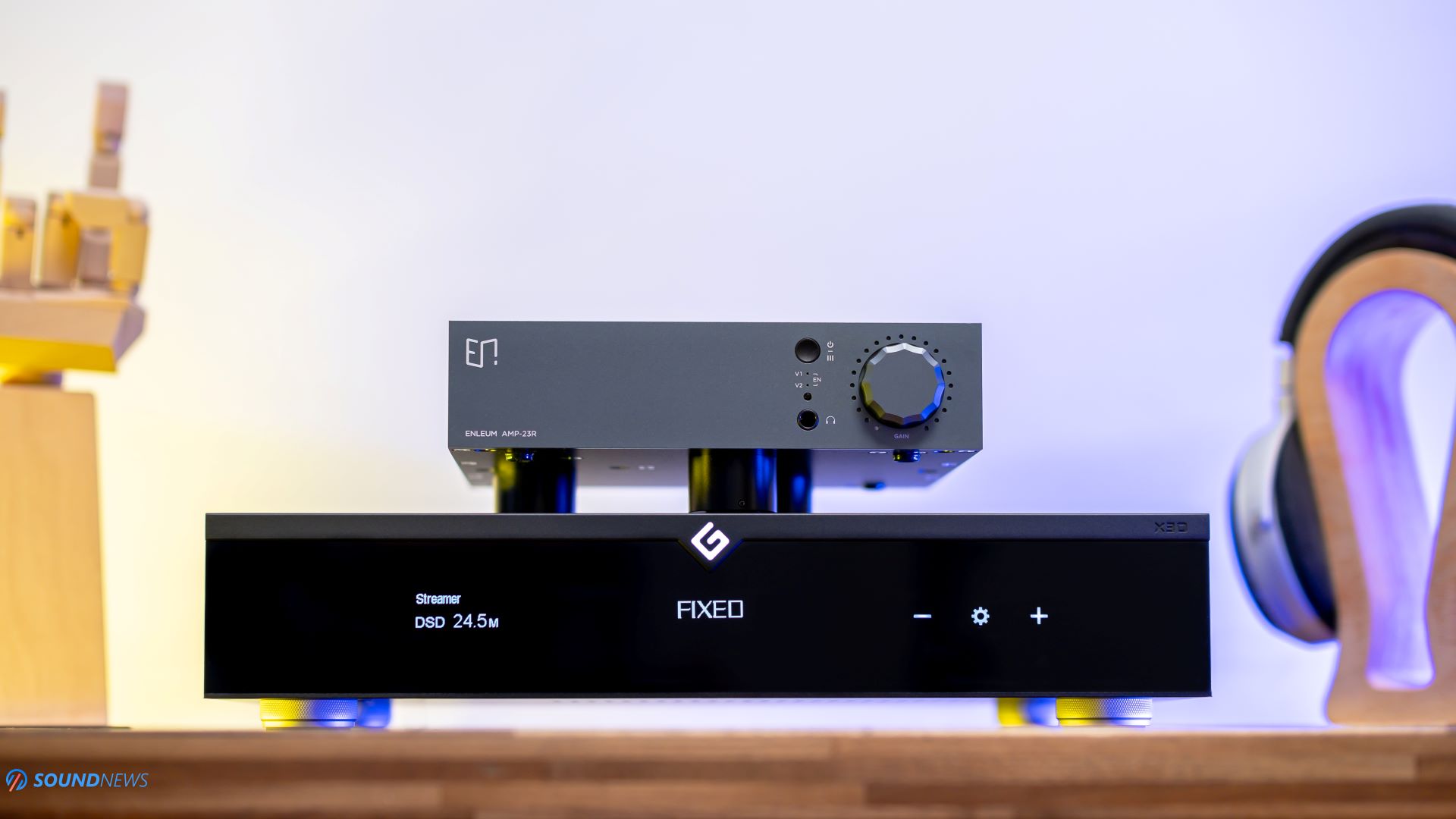
Frequency Response
VI. Bass
I giggled when somebody called the X26 PRO lightweight sounding in the bass, as that was one of its strongest points. When R26 was knocking on my door, a dark cloud could be seen on the horizon and Cliff Burton was riding it, laughing and shredding his bass in a godly manner. It was a sign from above. The R26 brought the thunder in the bass and it was doing it so great that many were getting it only for the bass energy alone. Crazy. X30 doesn’t try to outdo the R26, but it outdid the X26 PRO especially when it comes the bass sustain. I’m no bass head by any means, but it’s important to listen to bassy tracks as well, as a great DAC should cover the frequency response in full, without losing energy or definition in a particular range. A sine wave seen on a display is one thing, but hearing and experiencing the music is something else entirely. X30 doesn’t try to reinvent the wheel. It’s exactly as tight, clean, and deep sounding as the rest of its brethren. However, it sustains the bass energy for a bit longer as if it just won the Strongest Man competition. You can feel the force between each and every bass kick. You can feel the air passing by your body and the energy kicking you head-on. If you’re coming from a Topping or SMSL DAC, then the change will be immediate and undeniable. The bass energy is what makes it better, there’s more of it, while always taking care of its core skills – effortlessness, control, definition, and cleanliness. While it doesn’t outplay the Wavedream Signature, it again outplays the Chord DAVE when it comes to the force behind the bass. When it needs to impress and add a higher sound pressure level, it would do that more impressively. I would never call the DAVE lacking energy in here, but that’s what I’m thinking about when I’m comparing these two. X30 is thunder-God worthy. Another 10 out of 10.

VII. Midrange
From the entire Gustard portfolio, only two units could plant some life back into the music. A26 and R26, but the latter was doing that on another level. X26 PRO was also good and I never felt it dry or overly analytical sounding. It was fine by me and by many others, but it was not exactly organic sounding and it wasn’t bonding the notes like a veritable R2R unit would do. X30 on the other hand feels closer to the R26 than to its X26 and A26 siblings. It’s not sweet or overly smooth sounding, but there is a sense of righteousness and effortlessness that I don’t want to bring up or down a notch. I was discussing the other day with my pal Catalin about a documentary: I Am Celine Dion. You can find it on Prime Video and it’s a documentary I wholeheartedly recommend. I won’t spoil it for you, but it’s a must. Now, I don’t consider myself a Celine Dion fan, far from it, but since yesterday I started being one of her supporters. The rendition of the human voice is incredibly complex, it’s not only about the frequency you’re reaching or how loud you can maintain that SPL, but it’s also about small intricacies, gutturalness, and let’s not forget the human part. With the right gear and with the right mood, you can feel the soloist entering your listening room, whispering directly into your ears. That happens on a daily basis with something like a Wavedream Signature or Musician Taurus and to a certain degree, that’s what I’m hearing with the X30. Gustard redeemed itself with the X30, once again showing off its ability to turn a stone into a gemstone. It’s unusual calling a chip-based unit involving, soothing and organic, but that’s what I’m hearing at this very moment. Probably the biggest improvement versus its predecessor (X26) is the midrange region which brings forward additional life and nuance to human voice. A job well done.
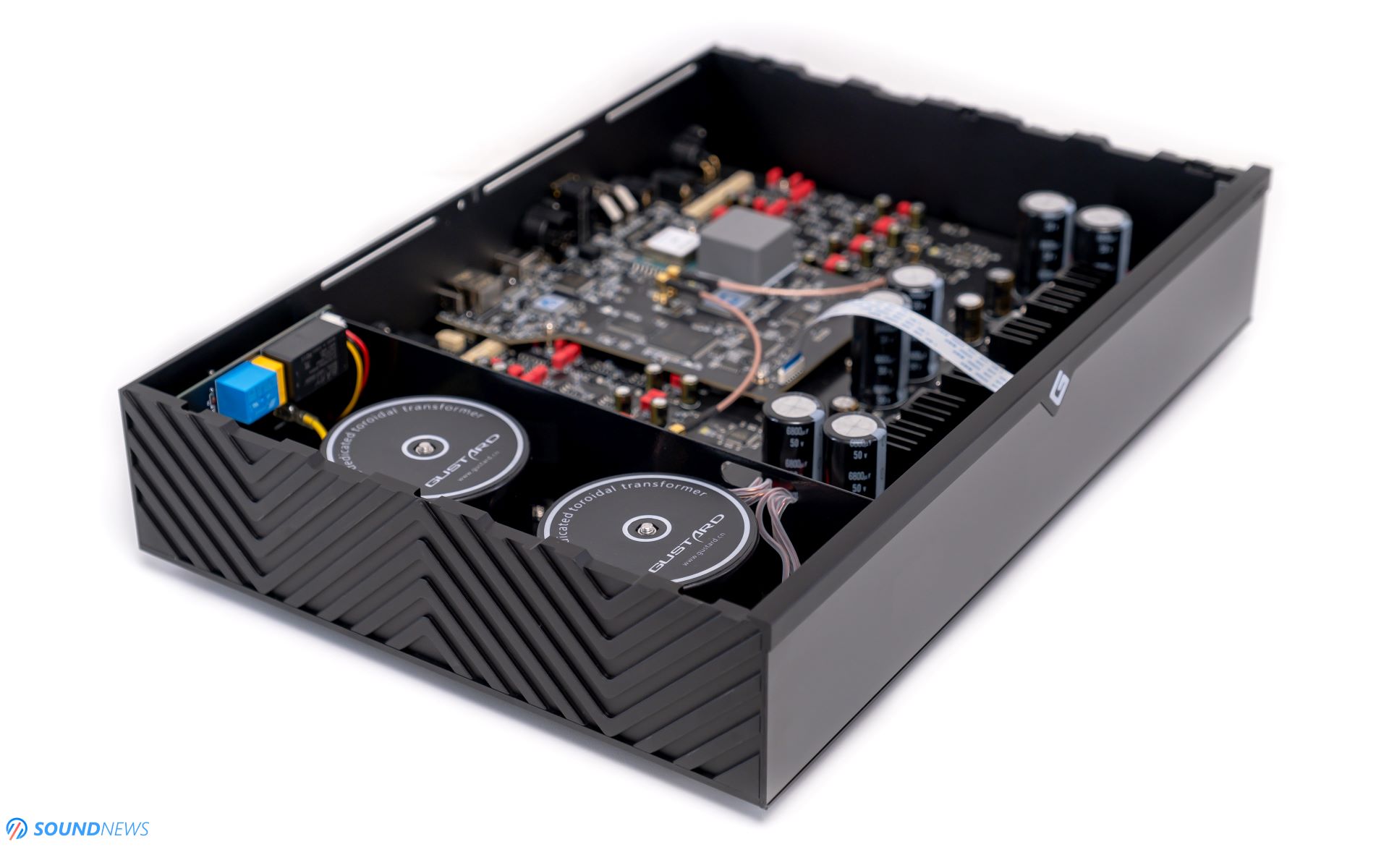
VIII. Treble
The treble region can be a shapeshifter. Sometimes people associate a cleanly polished treble, the highest resolution out there with listening fatigue or worse, with glare and digitus. I beg to differ as the highest resolving converters that I have tried are no longer just highly resolving but real-sounding like you no longer care about this part anymore. X26 PRO was extremely potent in here, it’s still an amazing unit to this day, but X30 does it more effortlessly in the long run. I can digest an hour of Metallica on the X26 PRO, however, I want to hear all of their repertoire on the X30. The word effortless comes forward more often than not. The trebles come naturally to you, it doesn’t try to attract lots of attention to it (as was the case with X26 PRO), you know it’s there and if you really want to focus on a particular solo or an instrument – I don’t need to close my eyes anymore. Overall, X30 feels like a fine-polished X26, there’s more refinement all across the board, like an aged wine on a cool summer day. The technicalities went up by a notch, but the elegance with which every tune syncs with my soul is on another level.
It shouldn’t be a surprise to anyone that X30 pulls ahead in the frequency response compared to their past doings. However, the tonal balance is what truly shines on the X30, getting a Genre Master title from the DACMan himself.
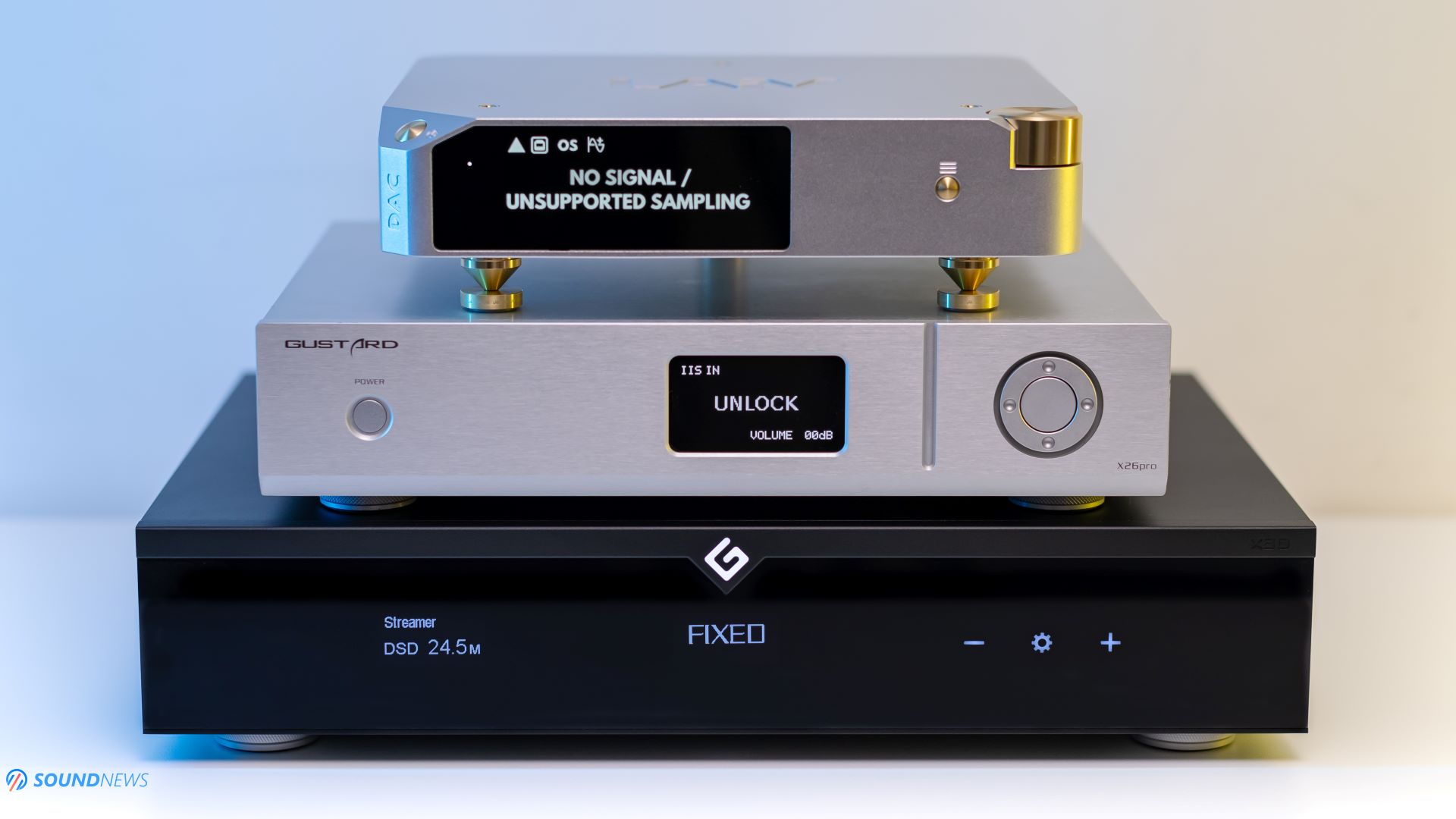
IX. Comparisons
I’m already picturing a crowd asking in unison how X30 compares to the X, Y, and Z. However, take into account that everything reviewed around here isn’t always purchased after our evaluations. I still feel obliged to compare it with its predecessor X26 PRO and also with the latest flavor of the month – LAiV Harmony DAC. The latter is an R2R ladder DAC, so I’ll be comparing apples with oranges, but still, I know many of you are wondering about the Harmony versus the X30 showdown, so let’s get this party started.
Gustard X30 ($2.999) VS Gustard X26 PRO ($1.499) VS LAiV Harmony ($2.700)
First and foremost, the X30 is more expensive than the rest, twice compared to its predecessor, and as such it doesn’t only need to sound better, but so much more feature-wise as well.
I won’t touch base about their looks and build quality, I will only say that the X26 PRO feels rough around the edges, and the X30 is considerably more sophisticated, from the looks and build quality standpoint. The Harmony is the smallest unit from this trio and it’s probably the best looking as well and please don’t get me started with its gorgeous remote control. If there’s something that Gustard needs to address right now, that would be the remote control – it doesn’t do justice to the rest of the unit and it doesn’t bode well with metal remotes sitting on a table.
One important aspect that Gustard addressed with the X30 versus its predecessor is heat dissipation. X26 PRO was hotter even versus a few integrated, and power amplifiers. The V regs and the discrete components are dissipating lots of heat that have nowhere to go but up. If you can’t keep your hand on the top plate for more than 3 seconds, it could be dangerous in the wrong environment. While X30 isn’t exactly cool, it’s by ~9 degrees Celsius cooler and as such, I no longer find it a potential hazard. It isn’t as hot as any of the latest Burson offerings, it’s not as hot as the Enleum AMP-23R or the Trafomatic Primavera, and I no longer fear leaving it overnight for burn-in purposes. As a bonus, the internal components aren’t cooking anymore, so expect a longer service life compared to its predecessor.
Feature-wise, X30 again takes the lead as you can find every possible digital input and analog output, including a microSD card slot and an Ethernet port that unlocks so many possibilities. If you would like to stream music, it’s easier than ever. It’s Roon enabled, it can do AirPlay, UPnP, and NAA. It would have been cooler to have a Chromecast built-in, Tidal Connect, and Spotify Connect options for a future-fi unit, but hopefully, they’ll learn from their past mistakes. Neither the X26 PRO nor the Harmony offers a built-in streamer or the same connectivity options.
Lastly, taking a peek inside their cases, you’ll unmistakably bump into X30’s superior clocking system and quad-mono DAC design, which I haven’t experienced before. The LAiV Harmony is a resistor-ladder DAC, exchanging DAC chips with a myriad of resistors controlled by an FPGA, it’s a different breed but still manufactured at high standards. And let’s not forget the Oversampling mode offered by the Harmony and the Non-Oversampling mode offered by the X30, both of which I find intriguing.
Sound-wise, X30 takes the torch where X26 PRO left the Olympic fire and walks an extra mile, improving on every aspect little by little. X26 PRO was already battling pricier converters like my former Matrix Element X ($2.999) in terms of sheer resolution, but the X30 with its overkill quad mono design brought forward the lost layers of resolution. I can’t differentiate it from my $18.000 Wavedream Signature or $14.000 Chord DAVE in terms of how much nuance there is. Is it as resolving, clean, and transparent? Yes! And this is a Biggity Big deal. In this regard, X30 pulls ahead and outperforms both the X26 PRO and the Harmony DAC and as much as I like the LAiV for its particular skill set, it’s in the last place when it comes to resolution.
Moving on to transients and dynamics, this is where (again) the X30 gets the Olympic gold. It’s instantaneous, it latches to my speakers and never lets them go. Obviously, the Pre and Power do most of the work but don’t forget from where they are getting the signal. X30’s timing is always spot on, it’s fast and nimble when needed, slow and gentle on other occasions. X26 PRO can reach similar speeds and dynamic shifts, but it won’t be as mellow and gentle with acoustic music. The Harmony on the other hand can be soft and mellow, and it certainly can play a catch me if you can game, but it’s nowhere as nimble, nor as impactful as the Gustards are.
The tonal balance is where the Harmony shines best and it’s the same place where X30 feels respected and loved for. Both are truly Genre Master units, shining with old and new music alike. X26 PRO still has a few traces of grain and digitus, sounding less believable to the rest. Old-school audiophiles will still prefer the smooth melody and note-bonding skills of the Harmony, while fresh-blooded headbangers will prefer the meaner attitude of the X30.
The soundstage and holography are skills that ascended the X30 to another level if we’re talking about chip-based oversampling DACs. The Harmony (with the right setup) can shine bright in this department too, but the note separation of the X30 is still unreachable and that shouldn’t come as a surprise, knowing that we’re dealing with a much bigger and heavier unit altogether. Harmony impressed with its layering and depth, while the X30 projected a grander overall picture, including a similar depth and spatiality. X26 PRO was somewhere in between these two and it was by no means a two-dimensional sounding unit, it’s that the other two were just more impressive. I went ahead and had another listen with the X30 powering the AMP-23R with the Solitaire P and sure enough, the soundstage bump moved to open back headphones, as the music started hovering all around me.
So, is this just a pimped-up Gustard X26 PRO? I think it’s a little more than that, inside and out. Substantial improvements were made all across the board and X30 isn’t only an upgrade path to X26 PRO users, but to any chip-based oversampling DAC I have tested so far.
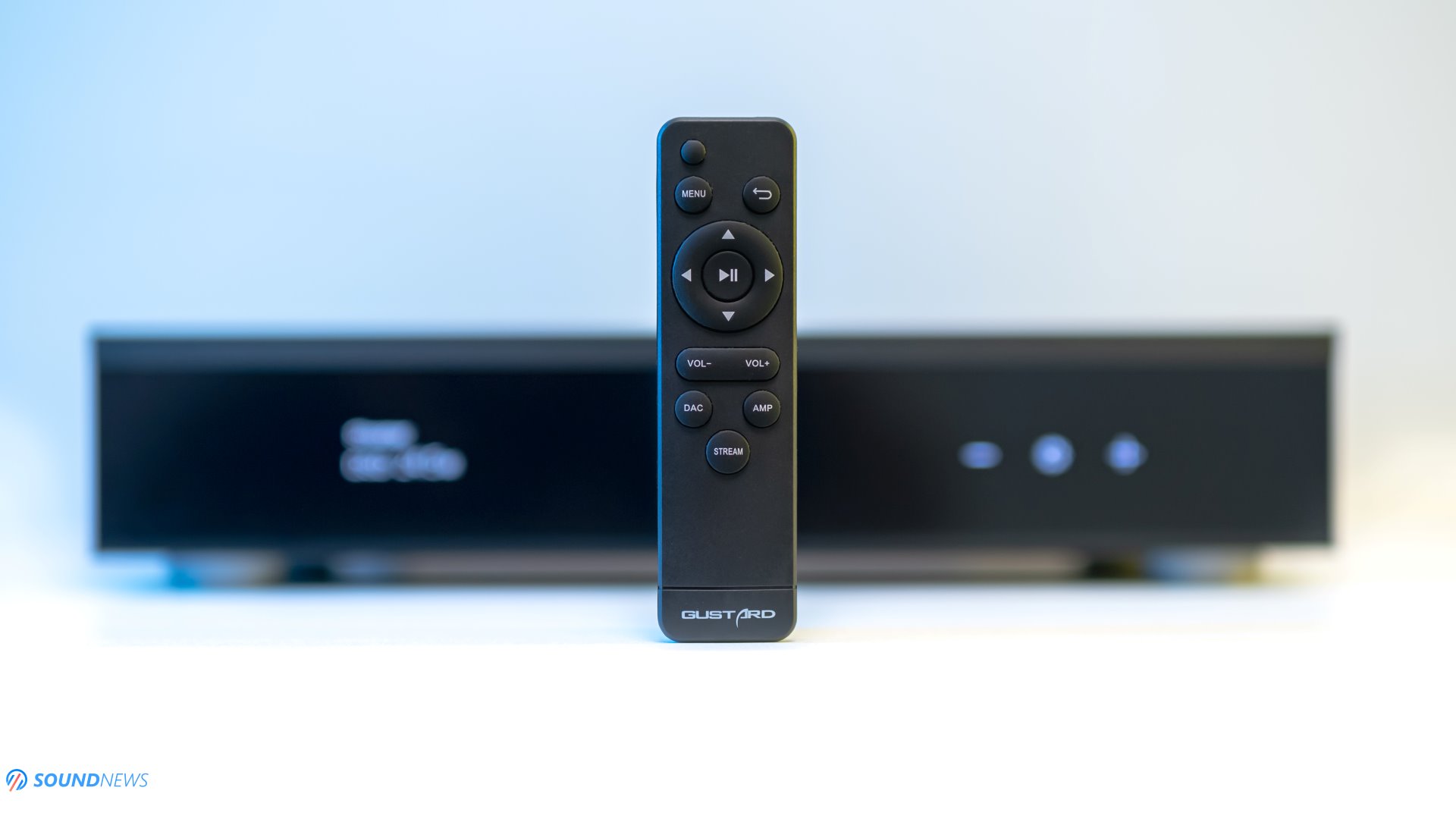
My Conclusions
Whoa, what a beautiful ride this was! It’s good to be back and I hope I’m not getting you bored with 15-page reviews and overkill sound impressions. I’m trying hard to lower the page count, but I’m sorry, this is who I am and this is what I do.
Before wrapping up my story, I just want to remind you that this wasn’t a sponsored review. These were my honest and unbiased impressions versus some of my DACs and some of the loaner units we have around here.
The fact that Gustard’s X30 held its own versus (much) pricier converters should tell you how high the fight rages on. In a few days, some friends will come over for a visit and they still don’t know what surprises I’m already cooking. I already prepared a curtain; they won’t know what will hit them. I can’t wait to see their faces.
In two weeks, it was used with a plethora of amplifiers, several headphones, and two pairs of loudspeakers, and in all of this period, I didn’t feel the presence of the notorious ESS Sabre Glare. It’s not there anymore! They pierced a stake through its heart and buried it. At this point, X30 is blurring the line between oversampling and non-oversampling DACs, chip-based or resistor ladder units, because I can no longer put a stamp on its sound. It blends the best skills of R2R and delta-sigma DACs while removing all of their minuses. I know, it sounds too good to be true, but it’s that good and it will remain the quintessential unit to beat at $2.999 for a while longer.
The only thing I can nitpick about would be its low-fi plasticky remote control. I mean their $499 X16 comes with the same remote…it’s time for a change. We all deserve a CNC-machined aluminum remote. I’m even ready to buy it separately if it releases shortly. Last but not least, we need a proper website for the Western market, not a Google-translated page which isn’t practical or serious. Some might skip this product entirely due to a poorly designed web page with no online support whatsoever.

Disregarding all of that mumbling, X30 is up there with the very best 5 units I extensively tested at my place. It’s that good. Before you go, do note that there’s a good deal of subjectivity in this review (even if I’m always staying neutral and close to the reader), so please don’t take my words for granted. If an opportunity arises, give it a shot.
I’ve waxed lyrical about it, and I’ve made bold claims about its potential, but let me assure you that every word was fueled by genuine enthusiasm. The Gustard X30 is a masterclass in audio engineering and while it’s not exactly affordable, it’s an investment that promises extraordinary returns. If musical engagement and technical excellence matter to you, don’t hesitate. Join the revolution.
The Gustard X30 graciously provided by Aoshida Audio, is now available on their web store for $2999 that includes worldwide shipping to your front door and proper support if things are going sideways. If you take the plunge and have some burning questions, feel free to drop a line in the comments section below. That’s all for now, Sandu’s signing out!
PROS:
- Oozes coolness and style, it’s undeniably the best-looking Gustard to date
- Its symmetrical display and touch controls